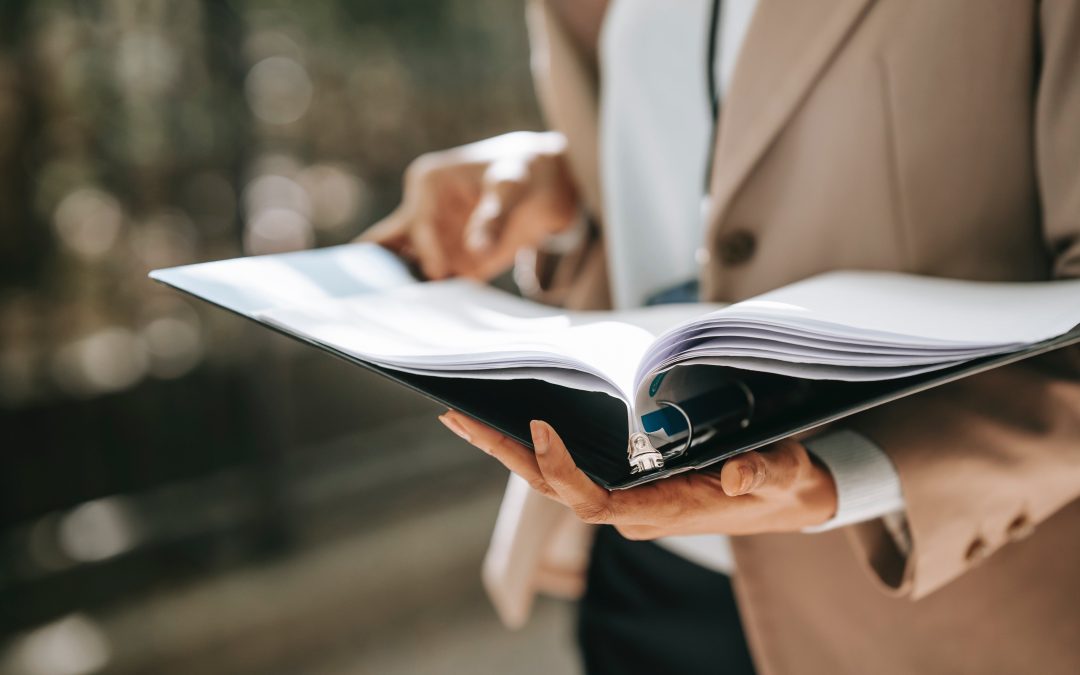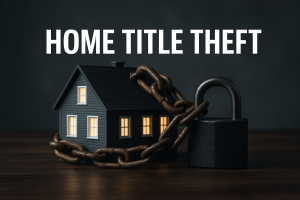A family emergency binder is a way to organize your important medical, financial, and legal information for you or other family members to reference during a time of crisis or loss.
This can be in paper form or electronic form. The main benefit is having the relevant information easily accessible so that you or family members don’t need to agonize over finding information that could be organized for much easier reference.
Reasons to have an emergency binder
Note that when we reference a “binder” this can be a physical binder of documents or it could be an electronic file on a flash drive or saved in a highly secure storage location.
If a family member passes away, the binder will help others locate information such as the Will, POA, funeral wishes and other important information during a time of grieving. Some people also call this a “legacy binder.”
During a natural disaster or evacuation, a binder can be quickly grabbed so that critical information goes with the family, rather than being left behind. Sometimes this is called a “grab and go binder” for that reason.
If a spouse or family member becomes unable to perform their normal duties due to an illness or being stuck out of town, the binder can be referenced to review what bills need to be paid or other information that is needed to answer medical questions.
If you recall during the Covid-19 pandemic, many people were quarantined while traveling and were unable to return home for a number of weeks or even longer. Sometimes in other cases, people may be stuck out of town for extended periods due to weather issues or other travel related problems.
Other benefits of the emergency binder
Having important information for reference can pay time dividends when it is needed for day to day living.
For example, if you child is going to summer camp or joining a sports team, and you need to list all allergies or medical issues, the binder would have a page with all of that information that you could easily copy or use as a reference to provide.
When getting a quote for auto insurance, you often need to provide the make, model year and VIN# of your vehicle. You could locate that easily in you binder.
If you are getting a physical in order to qualify for life insurance coverage, and you have to provide answers to numerous medical questions, a binder that contains a lot of this information would be very helpful.
Contents of the Family Emergency Binder
The list can vary, depending on how robust or lean you want to make your binder. The choice is up to you.
Medical information
Medical information would include a listing of allergies and current prescriptions. It would also include any current medical conditions.
In addition, any vaccinations, prior surgeries and blood type would also be helpful. A medical professional would want to know this information quickly when treating someone.
Have the name and phone numbers of the primarily care physician and other doctors is beneficial as well. This is also a good place to list health insurance and dental insurance coverage, along with a copy of any medical cards.
Providing the medical power of attorney for each person, and the related document or its location is useful.
For medical items, it may make sense to have a separate sheet for each person. That way, you can easily provide a copy to medical professionals during a medical emergency.
Contact information
Reference sheets that provide phone numbers of neighbors, friends, relatives and family members will make contacting people much easier and efficient in a time of need. Be sure to also include a human resource contact phone number and related employer information.
Contacts would also include an attorney who created a Will or Trust, and other professionals as appropriate.
Financial assets
A listing of where investment accounts and bank accounts are located (firms and account names) would be helpful for a spouse or family member that needs to handle your finances on your behalf. Relevant details such as the account numbers and any contact names or phone numbers as well.
There are likely different opinions on whether or not to also have the passwords to the financial accounts in the binder as well.
I would prefer not to keep the passwords in the binder. That way if the binder is ever compromised, a criminal wouldn’t easily have everything they need.
In my opinion, you want to be helpful to a point, while keeping security in mind too. Just like in business, it is helpful to have a separation of duties and custody of assets for control purposes.
Having “all the keys to the financial kingdom” in one portable place can be a little risky. One option would be to reference in the binder that the passwords are in another location. You can spell out that location or just make sure you verbally disclose the location to one or two trusted individuals that will need to step in for you when needed.
Another way to help combat this issue to to also have two factor authentication turned on for all your accounts. That way, someone would also need access to your cell phone in order to get to your asset accounts. Just make sure your trusted individuals know how to get into your phone as well.
Financial obligations
A bill pay log, which contains a list of bills that are paid each month and the related due dates, account numbers, and relevant information, would be helpful for a spouse or family member who needs to take over for the bills in your absence.
Since these are obligations and not assets, providing websites and passwords for these areas does not contain the same risk that providing the same information for financial assets does as explained above.
Insurance information
A listing of insurance policies including the insurer, policy numbers, and coverage is important. This would include life insurance policies, homeowners insurance, auto insurance, and other coverages.
It is also important to list the due dates of any premiums. You want to make sure premiums are paid on time so the coverage does not lapse. Ideally this information would already be included in the financial obligations page listed above.
A home inventory list of belongings can also fall under this as a sub-category. This means you have a listing, or a reference to a video or photos of your key belongings such as furniture, jewelry, cars, etc. A photo or video is helpful because it also confirms the existence of an item as well as its condition.
Personal experience
I know from personal experience about this when my in-laws home burned down years ago. It was a very time consuming and lengthy process for them to list all personal property for the insurance claim. Having photos or video of assets, which can be done quickly each year, makes providing a listing of personal assets much easier. Of course, if the binder is destroyed in a fire or other event, it won’t help much. Having a digital copy stored somewhere secure is likely a good idea for this area.
Key documents
It’s also a case of personal preference if you want to store key documents in the same binder, or just reference them in the binder that they are stored elsewhere.
If you are more risk adverse, you may want to store the documents in a safe or fire proof box, separate from the emergency binder. In this case you are listing all of the key information in the binder, but not necessarily copies or originals of the documents.
For example, titles to vehicles, birth certificates, a marriage license, and social security cards might be better kept in a small fire box separate from the binder.
So, you could keep all of the original documents in the binder in the respective areas (more risky), or you could just say “see safe” or “see firebox” to reference where they are located.
Other items to put in the binder
You can probably come up with many other items to include in the binder than what is listed above. That’s great. Each person can decide how far to take this process.
For example, you may want to have information on your child’s favorite book, hobbies, etc. for a family member that may need to take care of a child if you are unable to communicate that. Also, pet information can be useful as well (medicines, food preferences, vet information, etc).
Specific songs, funeral wishes, and all kinds of personal references can also be included in the binder if you feel that it is appropriate.
Where to store the binder
You want your binder kept in a safe place where only a few trusted people know where it is located.
This is also the time to consider an analog (physical binder) vs an electronic version. They both have their pros and cons. It’s your call on the preference.
Create your own binder or buy one?
This is another personal choice. It really doesn’t matter. The key is to not leave anything important out.
You can find free templates online or just make your own from scratch.
Here are some places to get free forms or templates:
- The US Government has a pdf generator that you can fill out here at Ready.gov.
- Here is another site where you can create your own emergency binder
A binder with pre-printed forms (or a fillable pdf) will make it much faster to get through the process at a cost to purchase of about $20 – $40, which may be well worth the time savings for many people. If you decide to go that route, a few options are included in the section below.
Here are some places to buy an emergency binder.
- You can get a pdf copy or flash drive at Emergency Binders
- Here is another site where you can purchase an Emergency Binder
- Another option is a binder that was developed specifically for a family with a member in law enforcement
Conclusion
Having an emergency binder can reduce a lot of headaches for you or loved ones.
You can go through a little pain now at your own pace to complete the binder, or incur a lot of pain later at a faster pace when you or a family member least wants to be doing it.
Executive Summary: How to protect your family with an emergency binder
- An emergency binder can give you peace of mind knowing your spouse or family members won’t have to hunt down information on short notice in the case of an emergency or time of grieving
- A binder can be a physical binder or an electronic one (ie: thumb drive)
- An emergency binder can also be referred to as a “grab and go binder” or a “legacy binder”
- An emergency binder provides a quick reference of important details often needed for daily life
- Some of the categories to consider for the binder include medical information, contact information, financial information (assets and obligations), insurance policies, and other wishes or information to communicate
- The binder should be stored in a safe place, known by you and a few trusted people
- You need to decide if it’s safer to include all important documents in the binder, or instead keep original important papers in a separate secure location
- Deciding where to store passwords is another decision point. Keeping the passwords in a separate location would likely provide a higher level of security vs easy access to everything
- You can purchase a binder, get free templates, or create one yourself. For many the relative nominal cost of buying a binder will offset the time consumed to create their own. Regardless, having a binder is the important part.



